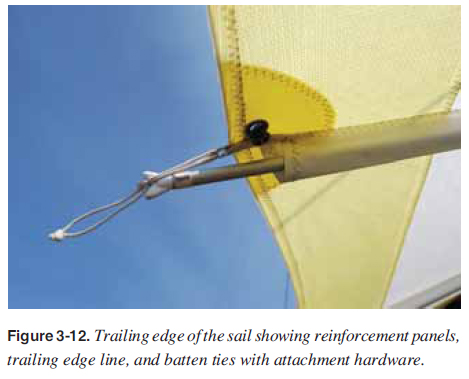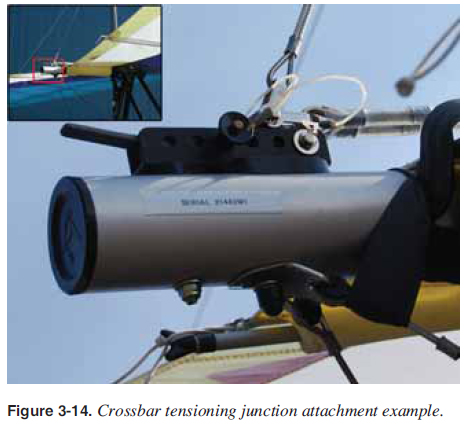
 |
|
||
| CHAPTER 3. Components and Systems
Battens and Leading Edge Stiffener As discussed in the aerodynamics section, stiff preformed battens are the airfoil ribs that maintain the airfoil shape from the root to the tips. Additionally, a foam or mylar stiffener is inserted in a pocket at the leading edge to keep a rigid airfoil shape between the battens from the leading edge up to the airfoil high point. Double surface wings have additional ribs on the bottom surface that are straight or formed to maintain the bottom surface camber. Sail Material and Panels Sail material is a combination of polyester materials designed with different weaves, thickness, and orientation to fi t the design mission of the wing. Panels are cut to different shapes and laid down at different angles to provide the stiffness and fl exibility where needed for the specifi c wing design. Automated machines typically cut the fabric to precision tolerances and the panels are sewn together with high strength thread. Pockets and Hardware Pockets are added for battens and hardware is installed for the wing frame and wire attachments. Trailing edge line or wires are sometimes added for reinforcement and can be used for tuning. Battens are held in with a variety of batten ties or other methods unique to the manufacturer. [Figure 3-12]  Sail Attachment to Wing Frame The sail is attached to the wing frame at the nose and the tips. A keel pocket towards the back of the sail secures the sail to the wing keel. [Figure 3-13]  Cables and Hardware Cables are used throughout the wing frame and sail to hold components in place and act as structure to carry loads. Flight and ground cables are stainless steel and attach to components with tangs or other hardware depending on the application. Cables are secured at each end with thimbles and swaged fi ttings. Figure 3-5 shows detail of typical swaged fi ttings. A variety of hardware is used for attaching these swaged cable fi ttings to the airframe. Each manufacturer has different hardware for wing components. [Figures 3-14 and 3-15]   |
| ŠAvStop Online Magazine Contact Us Return To Books |